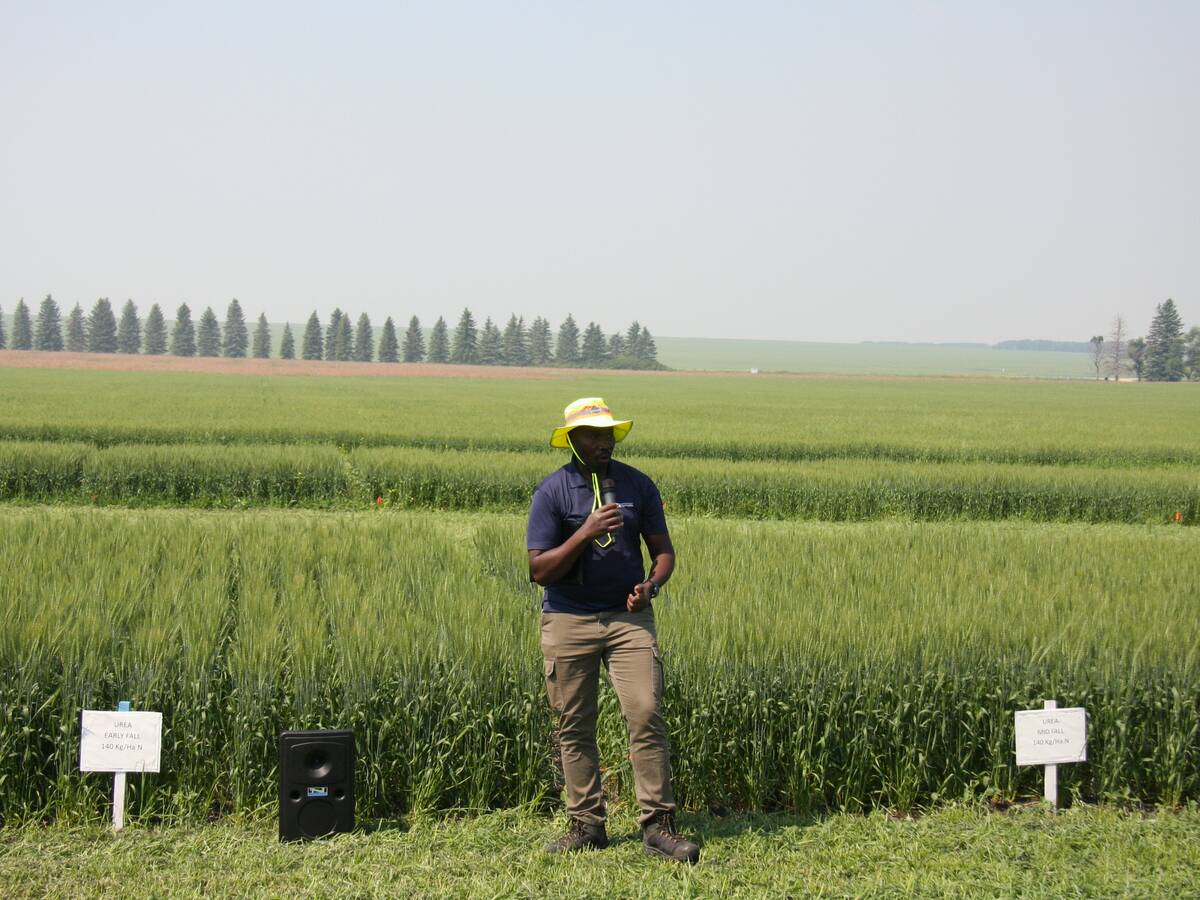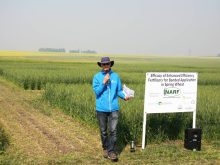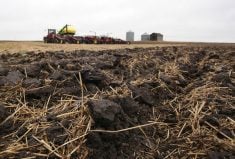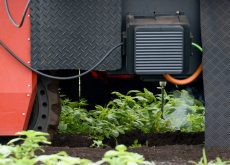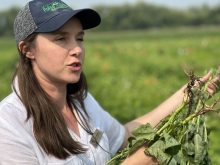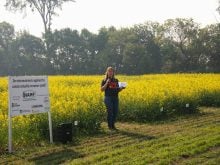Glacier FarmMedia – No farmer wants to lose the nitrogen they lay down to feed their next crop.
It’s a waste, particularly if fertilizer prices are high.
It’s also a black mark on agriculture, which as an industry is trying to pitch its existing environmental sustainability at a time when public scrutiny on areas such as nitrous oxide emissions has never been higher.
Read Also
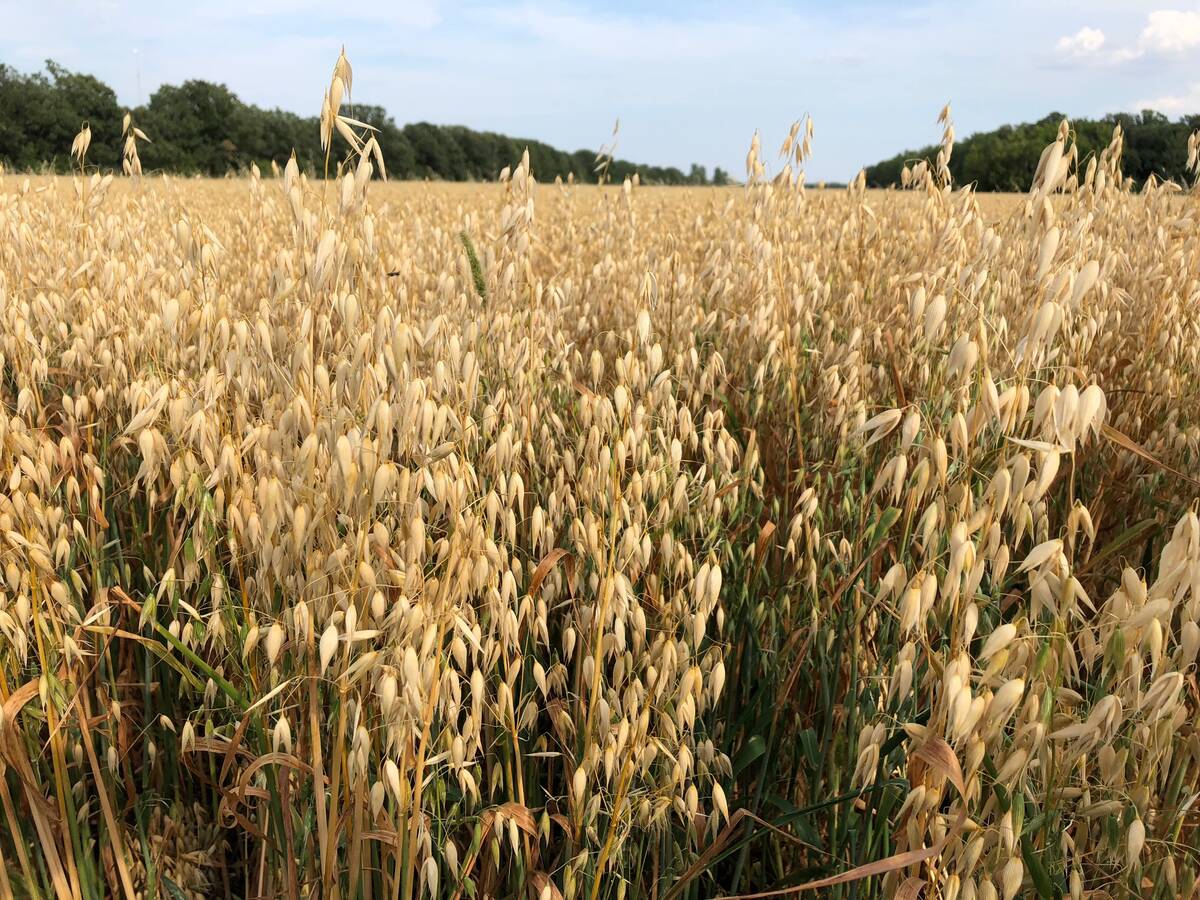
Controversy fails to prevent PGR use in oats
Some Manitoba oat growers are still using chlormequat chloride — the active ingredient in Manipulator —and sometimes to measurable success.
When it comes to fall fertilizer application, minimizing loss is a big part of the conversation. At the site of one federal research project, it’s the whole point.
“We have seen that with our winters here, there is sometimes not very significant differences if you applied in the fall or applied in the spring, so you might as well just do it in the spring,” Agriculture Canada research scientist Patrick Mooleki told last month’s Northeast Agriculture Research Foundation field day near Melfort, Sask.
“Now, when it comes to (lowering) nitrogen losses, whether it’s volatilization, denitrification or leaching, what’s the best (application) time to do that? So in a nutshell, that is the purpose of this study.”
His project analyzes the effects of different timings for fall nitrogen application. Researchers are comparing early (Sept. 25), mid-season (Oct. 10) and late-fall (Oct. 30) applications, both to each other and a spring application.
Mooleki is working with the theory that nitrogen losses correlate with moisture conditions at the time of application.
It’s in its second year across the Prairies, with two sites in Manitoba , three in Saskatchewan and one in Alberta.
The study uses two nitrogen sources: SuperU and urea.
The two inhibitors in SuperU — one to inhibit urease and the other to reduce denitrification of nitrates — adds another topical nuance to the study: assessing farmer cost. The idea is to see if, by using enhanced efficiency nitrogen, lower rates of product can ultimately be applied.
Plots treated with the two sources are being split between a full recommended rate treatment (140 kilograms per hectare) and a 60 per cent treatment (85 kg/ha).
“We’re applying the nitrogen based on the recommended amount of nitrogen for this area,” Mooleki said.
“So we take the samples in the fall, take them for analysis (and) we see how much nitrogen is in the soil. So based on that, we have a recommended rate we’re going use.”
To quantify the results, they’re looking at yield, overall plant quality and number of plants per sq. metre. Additionally, they’re taking soil samples the following fall to identify the level of nitrogen that remains after crop uptake.
When comparing fall applications, results at Manitoba sites and Swift Current, Sask., found that yields increased as applications dipped farther back in the fall. At Lacombe, Alta., early fall and mid-fall applications performed not that differently from spring when it came to yield.
At every site except for Melfort, however, yields from spring application did nose ahead of the fall treatments.
“Based on the results that we have seen so far here in Melfort, grain yield has responded to the nitrogen timing, and spring nitrogen application resulted in a lower grain yield,” Mooleki said.
The mid-fall application date, meanwhile, was showing taller stalks and fuller heads at the time of the 2025 field tour.
The researcher pointed to weather conditions. Last year was dry in the Melfort area with limited spring rains.
Mooleki is awaiting the full analyzed results of this year, but expects to see impacts to protein and yield between applications.
Mooleki and his team have been monitoring weather conditions and soil moisture levels with ground probes and a weather station. With that technology, they hope to link their observations of moisture conditions with associated expected nitrogen losses.
Some processes of the nitrogen cycle are bound to happen, such as nitrification, but the amount of loss from other processes could be limited with better timing, the researcher said.


